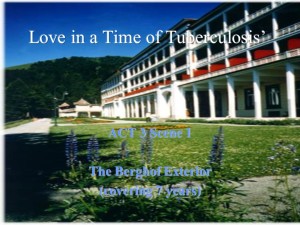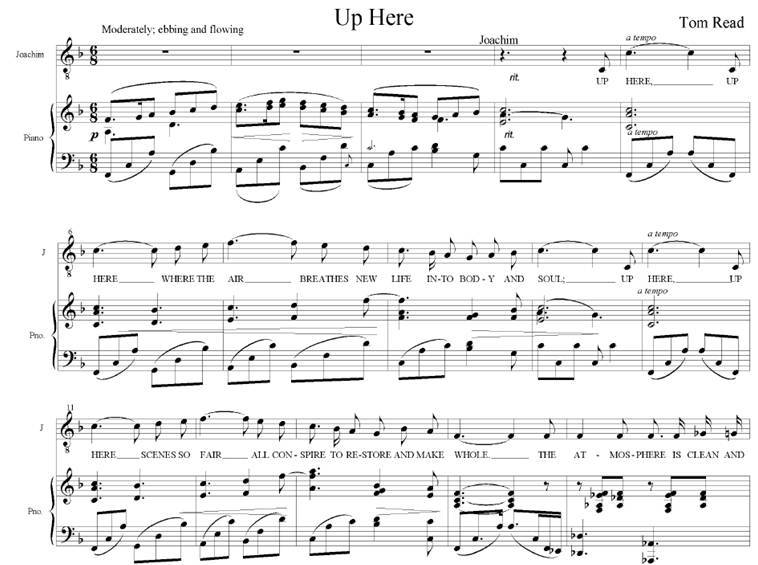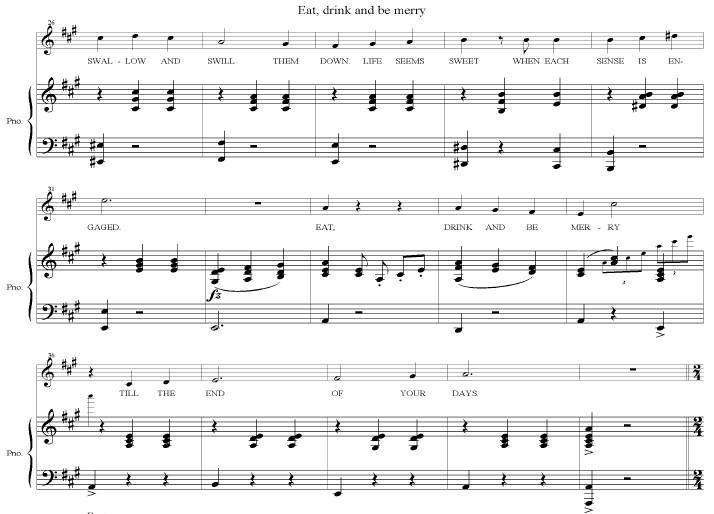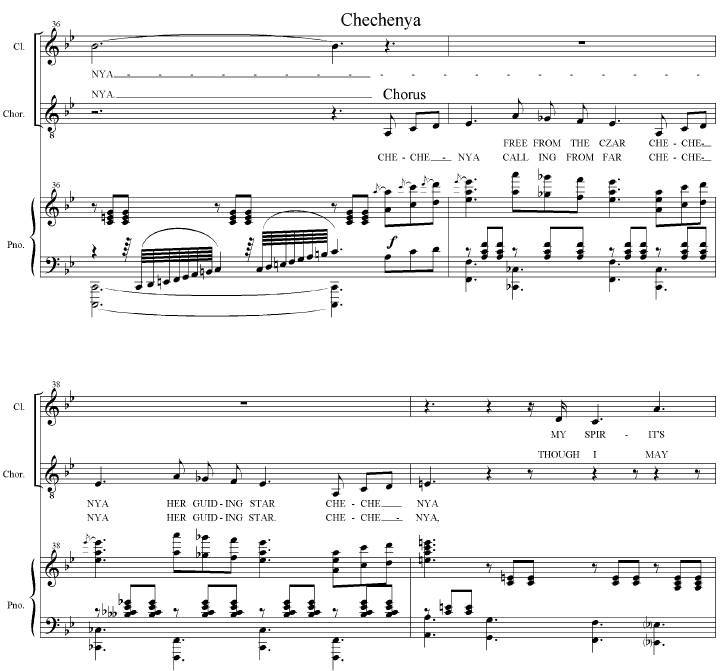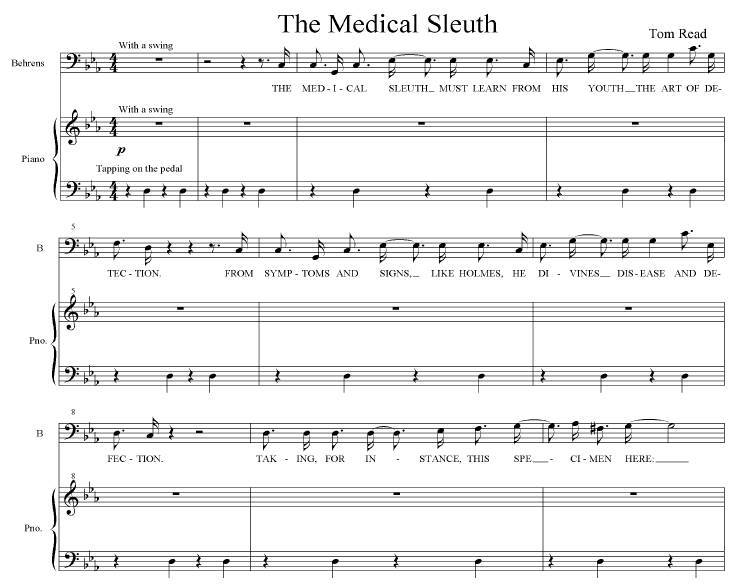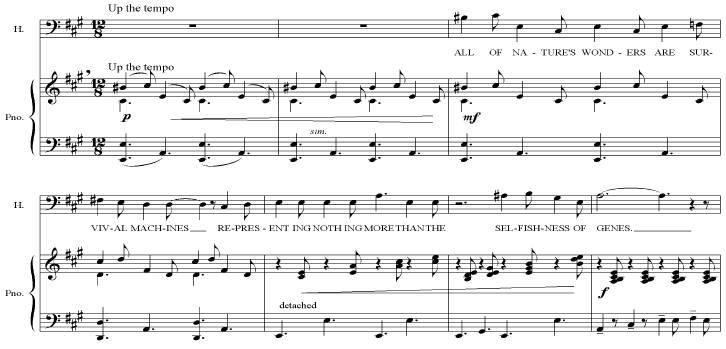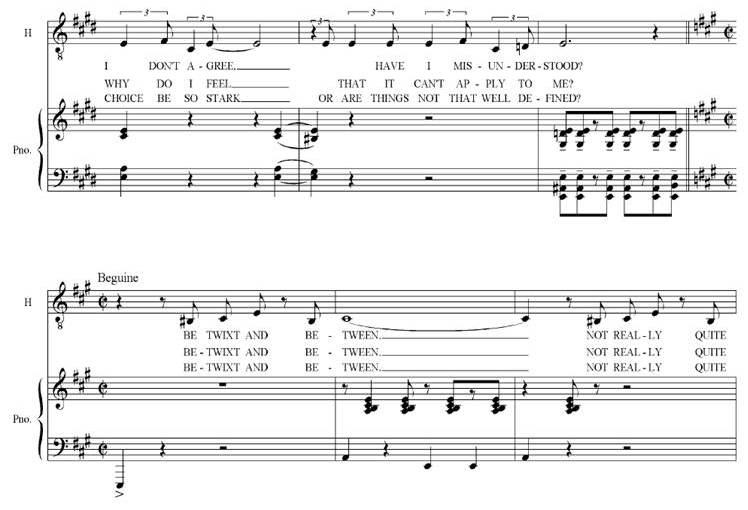Love in a Time of Tuberculosis
A musical in 3 acts
Book, lyrics and music by
Tony Westwood
Based on ‘The Magic Mountain’ by Thomas Mann
 PROLOGUE
Fanfare
In which the hero is introduced
Not very (Settembrini, Claudia, Pribislav, Joachim, Naphta)
Â
ACT I
Scene 1 (Davos railway station)
Hans is met at the station by Joachim
Up here (Joachim)
Scene 2 (Berghof exterior) A few minutes later
First experiences at the sanatorium. He meets Settembrini
Doctor’s orders (Chorus)
Entr’acte
A woman once came here coughing (5 soloists)
Scene 3 (Hans’ room) Immediately
Hans starts to settle in. His views on death.
The face of death (Hans)
Scene 4 (Dining room) Immediately
Dinner time for the patients. Claudia makes an entrance. Settembrini’s warning.
Eat, drink and be merry (Chorus)
Chechenya (Claudia and chorus)
The light of human Reason (Settembrini, chorus and audience)
Scene 5 (Berghof exterior)Â A week later
Daily life up here. More new experiences for Hans.
Entr’acte
My friend and I (Soprano)
Scene 6 Epiphany I (Near a waterfall) Later the same day
The Magic Mountain conjures up scenes from his past. The pencil.
Hippe (Hans and Pribislav)
Scene 7 (Dining room transformed into lecture hall) Half an hour later
Dr Krokowski’s views on the cause of tuberculosis.
Don’t be afraid of Freud (Krokowski and chorus)
Â
Scene 8 (Hans’ room) Ten days later
While preparing to leave, Hans measures his temperature
Mercurius (Hans)
Entr’acte
When health was mine (Soprano)
Scene 9 (The dining room) A few minutes later
Hans has a fever! Should he visit the doctor?
Young Hans (Soloists and chorus)
O, how I like to cough (Mrs Stohr)
Scene 10 (Doctors’ waiting room and surgery) The next day
A brief brush with Claudia. Joachim’s check-up – ‘just take 6 months’. Hans has TB and must remain on the Magic Mountain.
The medical sleuth (Behrens)
TB or not TB (Behrens, Krokowski, Matron, Hans, Joachim)
Up here – reprise (Principals and chorus)
Â
ACT 2
PROLOGUE
Why is Thomas Mann fascinated by disease?
Disease, deformity, disability and death
Little Herr Friedemann
Death in Venice
The Black Swan
Scene 1 (Berghof exterior) Sunday, three weeks later
Settembrini advises his pupil. Hans’ love and Joachim’s TB are still active.
Â
Entr’acte Milady Malady (Male patients)
Scene 2 (Settembrini and Naphta’s rooms) A few days later
A visit to Settembrini introduces an adversary.
The Great Debates (1) (Settembrini, Naphta, Hans, Joachim)
Deo gratias (Naphta)
Scene 3 Epiphany II (Balconies) A few months later
The fruit of Hans’ quest for answers is displayed. A vision of the beloved.
Party time (Chorus)
The facts of life: The selfish gene (Hans)
The facts of life: A brief history of time (Hans)
Party time (Reprise)
Scene 4 (Berghof exterior) A few months later
The arguments continue. Death. Joachim disobeys orders.
The Great Debates (2) (Settembrini, Naphta, Hans)
For Kaiser and country (Joachim)
Scene 5 (In exterior of curtain)
Prepare to witness a wild party
Walpurgis night (Settembrini)
Scene 6 (Dining room transformed for Carnival) Seven months after Hans’ arrival
The Mardi Gras Carnival. Hans breaks with Settembrini and approaches the beloved in a ‘dream’. But she will be leaving in the morning. He pours out his unique brand of love.
Don your mask! Get set! Go! (Chorus)
(Dances)
The Carnival Punch (Doctors and chorus)
Sweet as a peach (Claudia and chorus)
I believe this dream (Hans)
Claudia’s tango (Claudia)
The beauty of the body (Hans)
END OF ACT 2
Â
ACT 3
PROLOGUE
What is Time?
The Whirligig of Time (Naphta and Chorus)
Scene 1 (Berghof exterior) Covering a number of years
Tensions rise; unease is in the air. Hans is dissatisfied. Will music ease the pain?
The great god Dumps (Chorus)
The Great Debates (3) (Settembrini, Naphta)
Here I am up a mountain (Soloists and Hans)
Been there, done that (Hans)
Valentine’s aria (recording using Joachim’s voice)
Scene 2 (Hans’ room) Sometime later
A call to suicide.
Valentine’s aria (continued)
Der Lindenbaum (recording)
Scene 3 Epiphany III (Mountain scene) Later the same day
Hans takes stock. An enlightening vision.
Betwixt and between (Hans)
Snowstorm and the ‘two-in-one’ vision
Scene 4 (Joachim’s room) Sometime later
Death of Joachim
Up here / For Kaiser and Country – reprise (Joachim)
Scene 5 (Hans’ room) Sometime later
The Séance
Valentine’s Aria – reprise (Voice of Joachim)
Scene 6Â Â Sometime later
The Wheelchair Duel
Scene 7 (Berghof exterior) Seven year after Hans’ arrival
Life up here comes to an end
For Kaiser and Country – reprise.
Epilogue (A Battle field) Sometime during the 1914-18 war
We say farewell
Not very (Principals and Chorus)
Fanfare and Der Lindenbaum
THE END
Â
Â




















